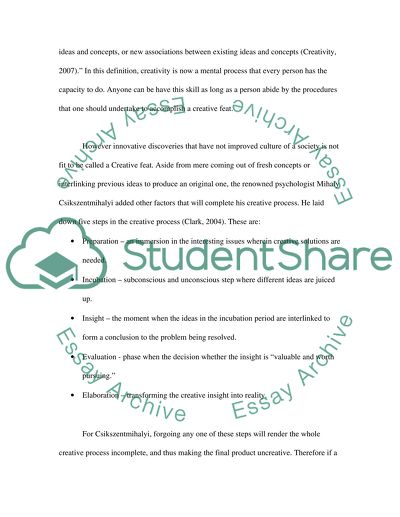Cite this document
(“Csikszentmihalyis Concept of Creativity Book Report/Review”, n.d.)
Csikszentmihalyis Concept of Creativity Book Report/Review. Retrieved from https://studentshare.org/sociology/1522710-csikszentmihalyis-concept-of-creativity
Csikszentmihalyis Concept of Creativity Book Report/Review. Retrieved from https://studentshare.org/sociology/1522710-csikszentmihalyis-concept-of-creativity
(Csikszentmihalyis Concept of Creativity Book Report/Review)
Csikszentmihalyis Concept of Creativity Book Report/Review. https://studentshare.org/sociology/1522710-csikszentmihalyis-concept-of-creativity.
Csikszentmihalyis Concept of Creativity Book Report/Review. https://studentshare.org/sociology/1522710-csikszentmihalyis-concept-of-creativity.
“Csikszentmihalyis Concept of Creativity Book Report/Review”, n.d. https://studentshare.org/sociology/1522710-csikszentmihalyis-concept-of-creativity.


